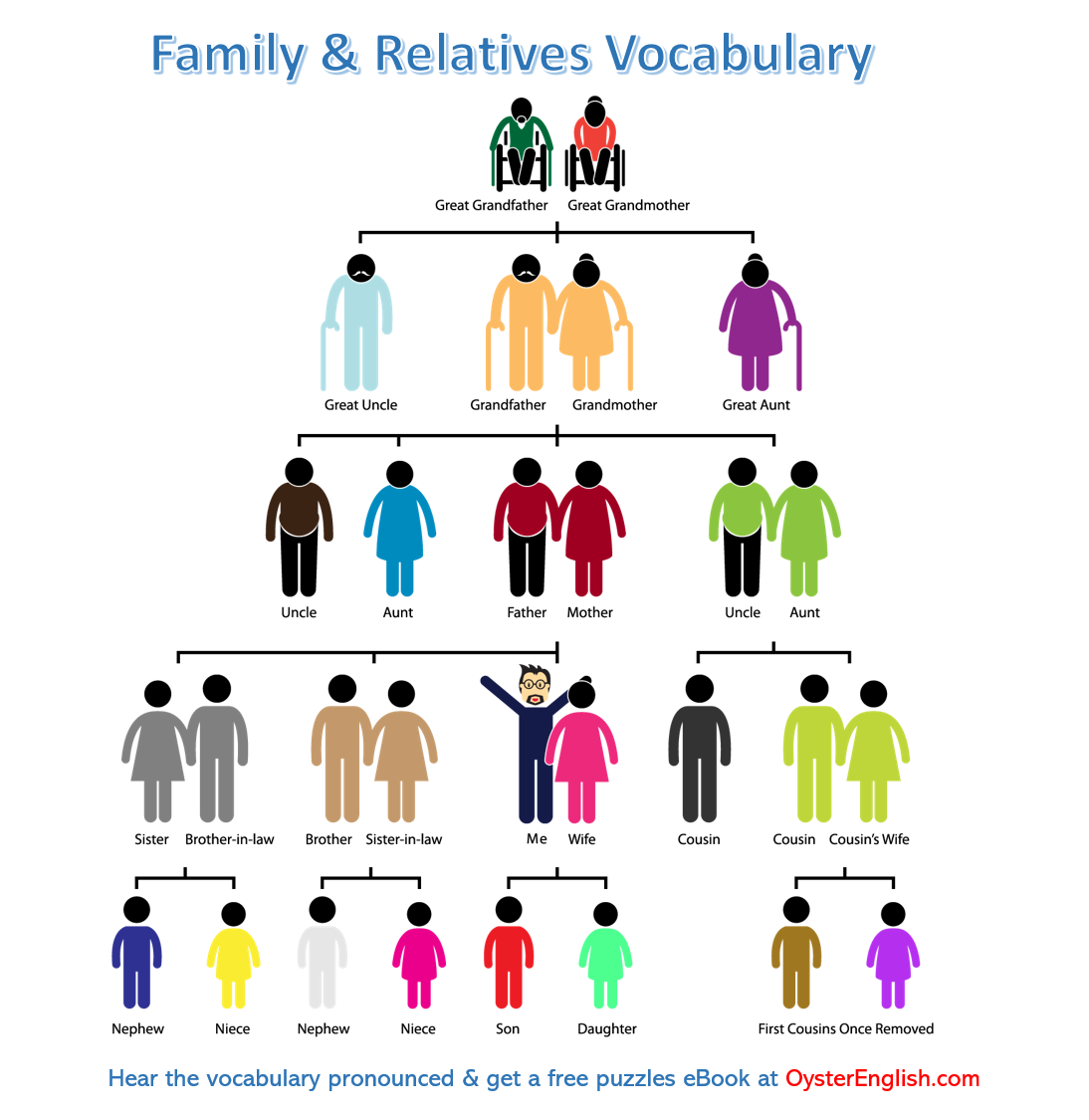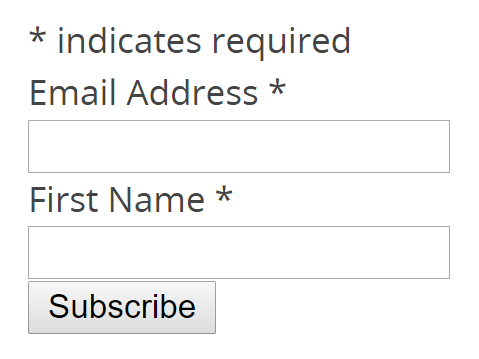Family Vocabulary
Let's learn some family vocabulary by going through this family tree. Pretend you're the dude with the beard and you'll learn how everyone is related to you. Watch the video for correct pronunciation too.
You can practice your own pronunciation by saying the word out loud during the pauses after each word.
Hear the family vocabulary pronounced
Get Your Free Vocabulary Puzzles eBook

Solving puzzles is a great way to learn vocabulary. This book contains more than 25 crossword, word search and word scramble puzzles on twenty (20) different topics.
Along with the FREE ebook, you'll receive my weekly newsletter with tips, lessons and special offers just for my subscribers.
Enter your name and email address below to get your free copy.
Family vocabulary defined
Before we define the family members in the family tree in the picture and video let's review some general family terms:
The people in your family are also called your relatives.
Your mother and your father are your parents.
You are the child of your mother and father. Brothers and sisters are also called siblings.
Your grandmother and grandfather are also called your grandparents.
Your spouse is your husband or wife.
If you end your marriage (get divorced), your spouse becomes your ex-husband or ex-wife.
If one of your parent remarries, their new spouse is your step-mother or step-father.
If your mother or father remarries and the person has children they are your step-brothers and step-sisters (they are not biologically related to you).
A half-brother or half-brother shares either a biologically related mother or father with you.
Name of relative
Definition / Relationship to YOU
mother
A female parent.
You are your mother's child.
father
A male parent.
You are your mother's child.
sister
A female sibling.
You have the same parents.
brother
A male sibling.
You have the same parents.
sister-in-law
The woman married to your brother.
Also, the sister of your spouse.
brother-in-law
The man married to your sister.
Also, the brother of your spouse.
aunt
The sister of your father or mother.
Also, the wife of your uncle.
uncle
The brother of your father or mother.
Also, the husband of your aunt.
great aunt
The aunt of your mother or father.
great uncle
The uncle of your mother or father.
grandmother
The mother of your mother or father.
grandfather
The father of your mother or father.
great grandfather
The father of your grandmother or grandfather.
great grandmother
The mother of your grandmother or grandfather.
nephew
The son of your brother or sister.
Also, the son of your spouse's brother or sister.
niece
The daughter of your brother or sister.
Also, the daughter of your spouse's brother or sister.
cousin
A child of your uncle or aunt.
first cousin once removed
A child of your first cousin.
- or -
Your parent's first cousin.
A few more family terms
Your in-laws are also your father-in-law (father of your spouse) and mother-in-law (mother of your spouse).
There are many types of cousins. Some are closer to you and some are more distant relatives. The closest cousins are your first cousins and they are two generations away from you.
In English we use two words to explain the exact relationship between cousins:
1. An ordinal number (first, second, third, fourth, etc.) to explain the degree.
2. the word "removed" to show the person is not in the same generation (first removed, second removed, etc.)
You probably do not need to remember these words to describe your cousins. However if someone else mentions these words, it will help you understand what they're talking about.
Your turn to practice
So write or speak about your own family so you can practice using these words.
- Do you have brothers and sisters?
- How many people are in your family?
- Do you live with your family or do you live alone?
- Are your older relatives still alive?
- Who is your oldest living relative?
- Who is the youngest?
- Do you come from a large or a small family?
You can write answers to these questions on a separate paper or just practice speaking out loud (either to yourself or with a speaking partner).
Another great way to practice the vocabulary is to do puzzles. As noted above, you can get a copy of our free puzzles ebook by joining our newsletter here.
- Home Page ›
- Main Vocabulary List ›
- Family vocabulary


